Digital activities
Interactive presentation for synchronous learning
A presentation (ppt, PREZI, Nearpod, Mentimeter, etc.) prepared in advance by the lecturer and including the presentation of information in a variety of representations and means of illustration, questions for discussion, structured breaks for active learning individually and in groups, knowledge testing using survey tools.
Student activities
- Free discussion of questions and answers
- Free discussion of questions and answers
Answer to yes/no questions, multiple choice question, open question via survey (e.g. Socrative, Kahoot). It is recommended to use a survey in order to see the full picture of all students and not just individuals who participate. - Participation in an open discussion in plenary, an opportunity for students to express ideas and opinions. Mainly suitable for a small class.
- Chat discussion and use of voting tools, for example chat and voting via poll in ZOOM
- Think-Pair-Share activity – a short task for self-solution, solution in pairs/small teams, plenary discussion.
- Predict-Observe-Explain activity – when presenting a demonstration, simulation, animation, engineering process, running code, etc. – students will be asked to predict the result, observe and then explain the result and any gaps between their prediction and the result.
- Snowball – recommended for a question with multiple solutions, a variety of examples or reasons, suitable for brainstorming in preparation for a larger task. The activity is carried out individually – in pairs – in a larger group – in plenary, with the goal of collecting a large variety of answers and in a plenary discussion to organize the ideas that have arisen.
- Answering interactive worksheets in a presentation, for example in Nearpod
- Word cloud – suitable at the beginning of a topic to examine which concepts students know in the context of a specific topic, for example in Mentimeter
- Brainstorming using a collaborative board, for example Padlet
- Discussion of rich visual representations that include linked diagrams, animations that the lecturer created, for example using Thinglink, Genial.ly or diagrams from image and animation databases on the Internet. The discussion can include an explanation of the representations, a link between representations (for example, between a graph and an animation of an engineering process), at a higher level students can be instructed to complete a visual representation (the lecturer will show a partial representation and the students will be asked to complete it) or to build a visual representation: for example, drawing a force diagram when the distribution of forces on the beam changes.
Active and guided viewing of a video in asynchronous learning
A lecture prepared in advance by the lecturer, lectures from academic institutions in Israel and abroad, lectures from previous semesters, a video from the network such as a TED talk.
Implementing questions and tasks during viewing, a variety of thinking levels.
(Panopto, Edu.tube)
Student activities
- Answering questions during the video
- Managing a dialogue/discussion while watching the video
- Solving problems after watching - in teams or individually
- Solving a test in moodle before class - as a condition for entering the laboratory/class
- Answering a survey at the beginning of class - as an indication to the lecturer about the state of the class
Exploratory tools and environments
Scientific simulations, computerized laboratories, interactive animations.
It is recommended to choose a rich environment (e.g. Phet) that allows the student to perform manipulations and examine their results and even conduct a controlled experiment, raise hypotheses, collect qualitative or quantitative data and draw conclusions.
Student activities
- Synchronous - presenting the simulation during a lecture or practice as an enrichment or illustration of concepts, processes and principles. Students will explain the behavior of the simulation, predict the result of an action on the simulation, investigate the effect of parameters on the quantities measured in the simulation.
- Asynchronous activity - in preparation for a lesson or topic summary. Students will experiment and investigate the simulation according to instructions and guiding questions, which is usually not possible during the lesson due to lack of time.
Student Content Creation
Meaningful learning is learning that provides students with opportunities to create content: express ideas, explain concepts and principles learned as they understand them, organize information and connect topics, apply principles and processes to solve problems, and create new representations. These can be active learning experiences, formative assessment tasks, or summative assessment.
Student Activities
Create a diagram, 3D model, video animation as a homework assignment. For example:
- Prepare a poster summarizing a topic using a ppt, Thinglink, or PREZI presentation
- A student will film themselves solving an algebra exercise, add notes and explanations using EduTube or Ted.Ed, and share with the instructor and peers.
- Collaborative problem-solving discussion using Padlet or flipgrid
- Presenting a project proposal in a forum using moodle
- Creating an animation depicting an engineering process using Pawtoon
צבע רקע
גופן
צימוד אותיות
גודל גופן
תצוגת תמונות
ריווח אותיות
גובה קו
הדגשת קישורים
Text Alignment
צבע טקסט
